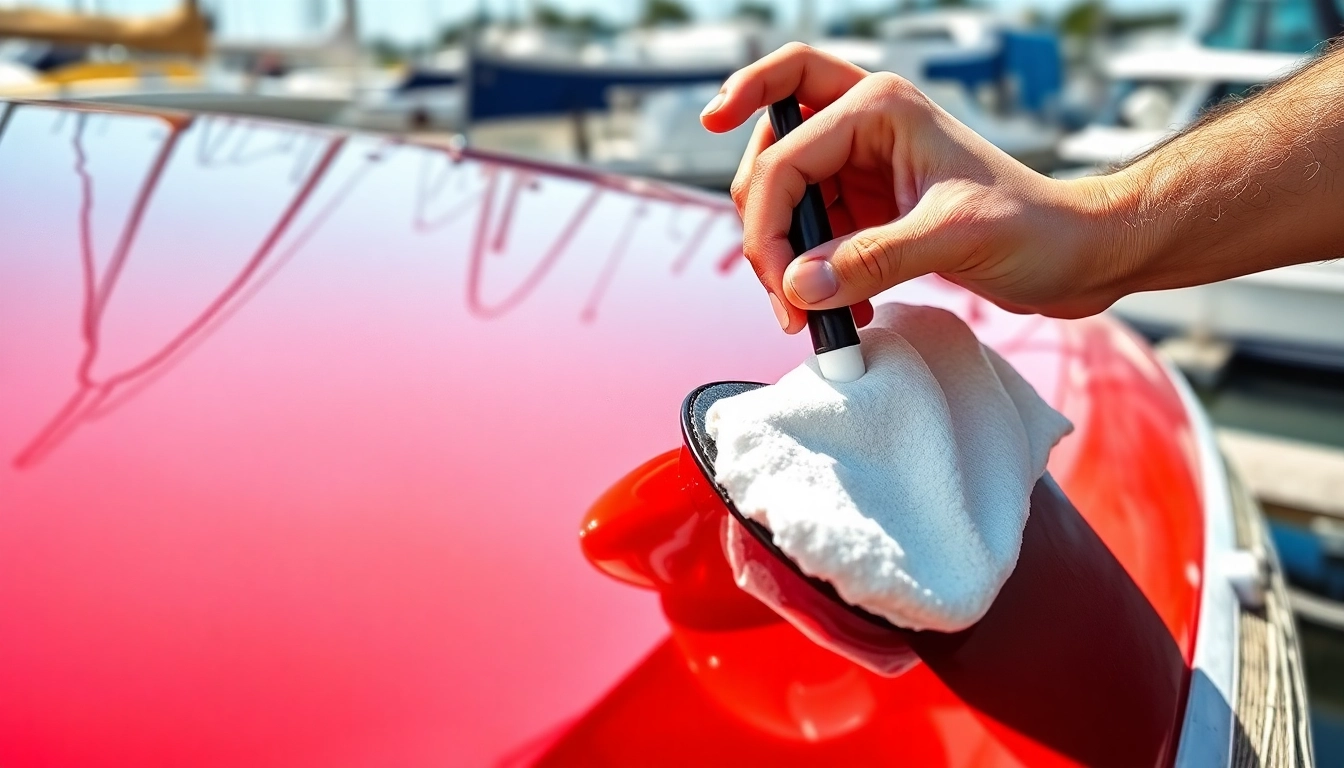Protecting Your Watercraft with Top-Quality Boots Versiegelung
When it comes to maintaining the pristine condition and longevity of your boat, van, or RV, applying an effective Boots Versiegelung is paramount. This specialized polymer-based coating creates a durable barrier that shields your watercraft from harsh environmental influences such as UV rays, saltwater, dirt, and weather fluctuations. The importance of choosing the right sealing product cannot be overstated—proper application ensures your vessel’s finish remains glossy, smooth, and protected for years to come. In this comprehensive guide, we’ll explore the key advantages of boots versiegelung, the factors influencing your selection, step-by-step application techniques, best-practice maintenance, and the benefits of investing in long-term protection.
Why Boots Versiegelung Is Essential for Your Watercraft
Key Benefits of Boots Versiegelung
Boots versiegelung offers numerous advantages, primarily focused on safeguarding your investment. By forming a thin, yet highly resilient, polymer film on the boat’s surface, it provides an excellent shield against environmental stressors. This includes protection from ultraviolet (UV) damage, which can cause oxidation and dullness, and from saltwater corrosion that can degrade gelcoat and paint layers. Moreover, the seamless coating enhances hydrophobic properties, causing water to bead and roll off, thereby reducing dirt adhesion and making cleaning significantly easier. An effective sealer also prevents the formation of stubborn algae, barnacles, or other marine growth, preserving the boat’s aesthetic appeal and resale value.
Common Challenges in Boat Sealing
Despite its benefits, applying boots versiegelung presents challenges such as surface contamination, improper preparation, or uneven coating application that can compromise effectiveness. Salt deposits, oxidized layers, or old wax residues can create bonding issues, leading to premature failure of the sealant. Additionally, environmental factors like high humidity, fluctuating temperatures, and dust can hinder proper curing. Addressing these challenges requires a meticulous process: thorough cleaning, correct product selection, and precise application techniques—steps that will be covered in detail later.
Long-Term Protection and Environmental Resistance
Polymer-based hull sealants excel in offering long-lasting protection by forming a chemical bond with the surface. This bond enhances resistance to saltwater, oil, and UV radiation, extending the intervals between reapplications. The result is a resilient, glossy finish that maintains its protective properties over many seasons, reducing the frequency and cost of maintenance. Such high-performance protection aligns with modern eco-friendly practices by minimizing the use of abrasive or aggressive cleaning chemicals.
Choosing the Right Boots Versiegelung for Your Vessel
Types of Protective Coatings Compared
The market offers various formulations for boat sealing, ranging from traditional waxes and polishes to advanced polymer sealants and ceramic coatings. Typically, polymer-based products — such as marine sealants and hybrid coatings — are favored for their durability and water-repellent properties. These include solvent-based coatings, water-based polymer sealants, and ceramic top coats. Unlike wax, which wears off quickly, polymer sealants chemically bond with the gelcoat or paint, providing superior longevity, UV protection, and resistance to environmental stressors.
Criteria for Optimal Selection
Selecting the best boots versiegelung requires assessing several critical factors:
- Surface Compatibility: Ensure the sealant is suitable for gelcoat, painted, or varnished surfaces.
- Durability: Look for product data indicating protection duration—ideally 12-24 months.
- Application Method: Choose between spray, wipe-on, or brush based on your ease of use and vessel size.
- Environmental Resistance: Verify resistance against UV, salt, and chemical exposure for your operating waters.
- Ease of Maintenance: Opt for products that simplify cleaning and reduce future reapplication effort.
Essential Properties for Long-Lasting Quality
Top-tier boots versiegelung products feature advanced polymer technology, which creates a flexible, transparent film adhering strongly to the surface. Key properties include high scratch resistance, chemical inertness, and excellent hydrophobicity. Moreover, some formulations incorporate UV stabilizers and anti-oxidants, prolonging the coating’s lifespan even under intense sunlight or salt exposure. When selecting a product, prioritize brands with proven track records, positive user reviews, and compliance with maritime safety and environmental standards.
Applying Boots Versiegelung: Step-by-Step Guide
Preparing Your Watercraft Surface
Proper preparation is fundamental for an optimal sealant bond. Start with a thorough cleaning using a high-quality marine cleaner like the BCC Power Cleaner, removing salt, dirt, oil, and previous wax residues. Use a soft microfiber towel (such as the BCC Microfaser Towel) to ensure no abrasive particles remain. If oxidation or scratches are present, consider polishing with a suitable abrasive polish—such as the BCC Power Polish—before applying the sealer. Always ensure the surface is completely dry, ideally waiting 24 hours after cleaning and polishing.
Application Techniques for Uniform Coating
Achieve an even application by using a foam applicator pad or a soft microfiber cloth, applying thin, overlapping layers across the entire surface. Work in small sections, maintaining a consistent pressure. For larger vessels, a foam gun like the BCC Snow Foam Gun can assist in pre-wetting and distributing the sealant evenly. Follow the manufacturer’s instructions carefully regarding curing times—most products require a curing period of 12-24 hours in dry, shaded conditions to achieve maximum adhesion and effectiveness.
Troubleshooting and Timing
In case of streaks or uneven spots, lightly buff the area with a clean microfiber towel and reapply if necessary. Applying in optimal weather conditions—no rain, high humidity, or direct sunlight— minimizes risks of curing issues. Regular inspections after application help detect early signs of wear, enabling timely reapplications to maintain optimal protection.
Best Practices for Maintenance and Longevity
Routine Cleaning and Touch-Ups
Maintaining the integrity of your boots versiegelung involves routine cleaning with safe, marine-specific detergents, avoiding abrasive scrubbers. Employ microfiber towels like the BCC Microfaser Towel or BCC Orange Towel to gently remove salt deposits and dirt, preserving the coating’s effectiveness. Periodic inspections should be paired with light reapplication of the sealant—generally every 12 to 24 months—to reinforce protection.
Common Errors and How to Avoid Them
Common mistakes include applying sealant on dirty or wet surfaces, which compromise adhesion; neglecting to remove old wax or oxidation before sealing; and applying in unsuitable weather conditions. Following the recommended preparation and application procedures mitigates these errors. Use dedicated cleaning products, such as the BCC Power Cleaner, and adhere to curing guidelines for best results.
Maximizing Product Lifespan
To extend the lifecycle of your boots versiegelung, avoid abrasive cleaning tools, stay clear of harsh chemicals, and park vessels in shaded, covered areas after application. Applying an additional protective polish or hydrophobic coating periodically can further enhance durability. Investing in high-quality products like the MARINE SEALANT MS-3000/60 V2 adds to the longevity, preservation, and overall profitability of your watercraft.
Boots Versiegelung Versus Other Protective Methods
Advantages of Polymer-Based Sealants
Compared to traditional waxes or natural polishes, polymer-based boots versiegelung provides a far more durable, chemically bonded protective layer. It resists washing out, withstands UV degradation, and maintains hydrophobic properties longer, significantly reducing maintenance frequency and cost.
Maintenance Effort and Cost Analysis
While initial application might require effort and investment, the long-term savings are notable. The reduced need for frequent polishing or waxing, combined with less intensive cleaning routines, translates into lower operational costs. Moreover, high-end products like the Gtechniq Marine Ceramic coating offer additional layers of protection, further prolonging intervals between reapplications.
Long-Term Preventive Benefits and Savings
Protecting your boat with quality boots versiegelung not only preserves aesthetic appeal but also minimizes costly repairs resulting from UV damage or corrosion. Over multiple seasons, the cumulative savings—and the enhanced resale value—highlight the economic advantage of investing in high-quality, durable sealants.


